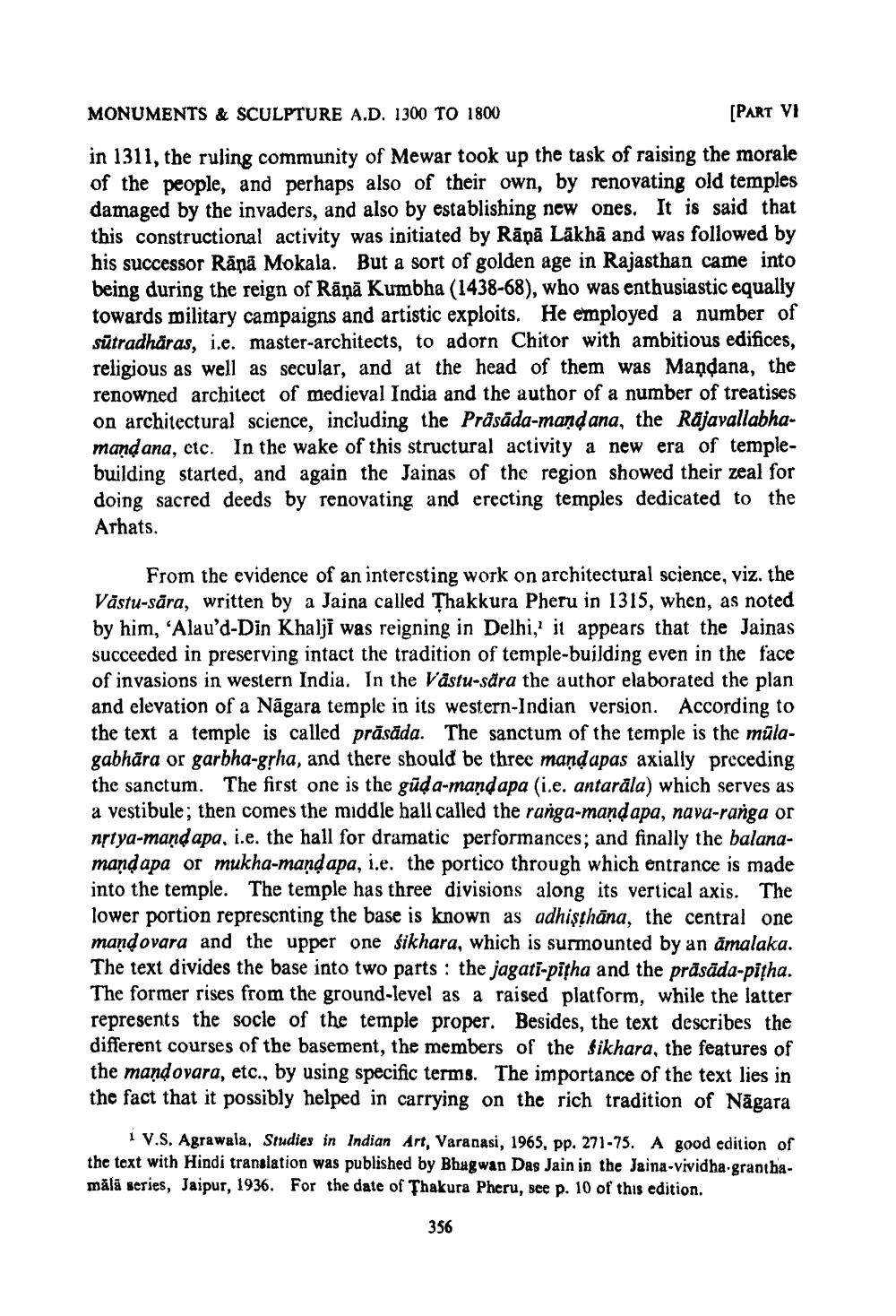________________
MONUMENTS & SCULPTURE A.D. 1300 TO 1800
[PART VI
in 1311, the ruling community of Mewar took up the task of raising the morale of the people, and perhaps also of their own, by renovating old temples damaged by the invaders, and also by establishing new ones. It is said that this constructional activity was initiated by Rāņā Lākhā and was followed by his successor Rānā Mokala. But a sort of golden age in Rajasthan came into being during the reign of Rāņā Kumbha (1438-68), who was enthusiastic equally towards military campaigns and artistic exploits. He employed a number of sūtradhäras, i.e. master-architects, to adorn Chitor with ambitious edifices, religious as well as secular, and at the head of them was Maņdana, the renowned architect of medieval India and the author of a number of treatises on architectural science, including the Präsāda-mand ana, the Rajavallabhamandana, ctc. In the wake of this structural activity a new era of templebuilding started, and again the Jainas of the region showed their zeal for doing sacred deeds by renovating and erecting temples dedicated to the Arhats.
From the evidence of an interesting work on architectural science, viz. the Västu-sāra, written by a Jaina called Thakkura Pheru in 1315, when, as noted by him, 'Alau'd-Din Khalji was reigning in Delhi, it appears that the Jainas succeeded in preserving intact the tradition of temple-building even in the face of invasions in western India. In the Vastu-sära the author elaborated the plan and elevation of a Nāgara temple in its western-Indian version. According to the text a temple is called prāsāda. The sanctum of the temple is the mülagabhāra or garbha-grha, and there should be three mandapas axially preceding the sanctum. The first one is the gūda-mandapa (i.e. antarala) which serves as a vestibule; then comes the middle hall called the ranga-mandapa, nava-ranga or nrtya-mand apa, i.e. the hall for dramatic performances; and finally the balanamand apa or mukha-mand apa, i.e. the portico through which entrance is made into the temple. The temple has three divisions along its vertical axis. The lower portion representing the base is known as adhişthāna, the central one mandovara and the upper one śikhara, which is surmounted by an amalaka. The text divides the base into two parts: the jagati-pitha and the prāsāda-pitha. The former rises from the ground-level as a raised platform, while the latter represents the socle of the temple proper. Besides, the text describes the different courses of the basement, the members of the Sikhara, the features of the mand ovara, etc., by using specific terms. The importance of the text lies in the fact that it possibly helped in carrying on the rich tradition of Nāgara
1 V.S. Agrawala, Studies in Indian Art, Varanasi, 1965, pp. 271-75. A good edition of the text with Hindi translation was published by Bhagwan Das Jain in the Jaina-vividha granthamålā series, Jaipur, 1936. For the date of Thakura Pheru, see p. 10 of this edition.
356




